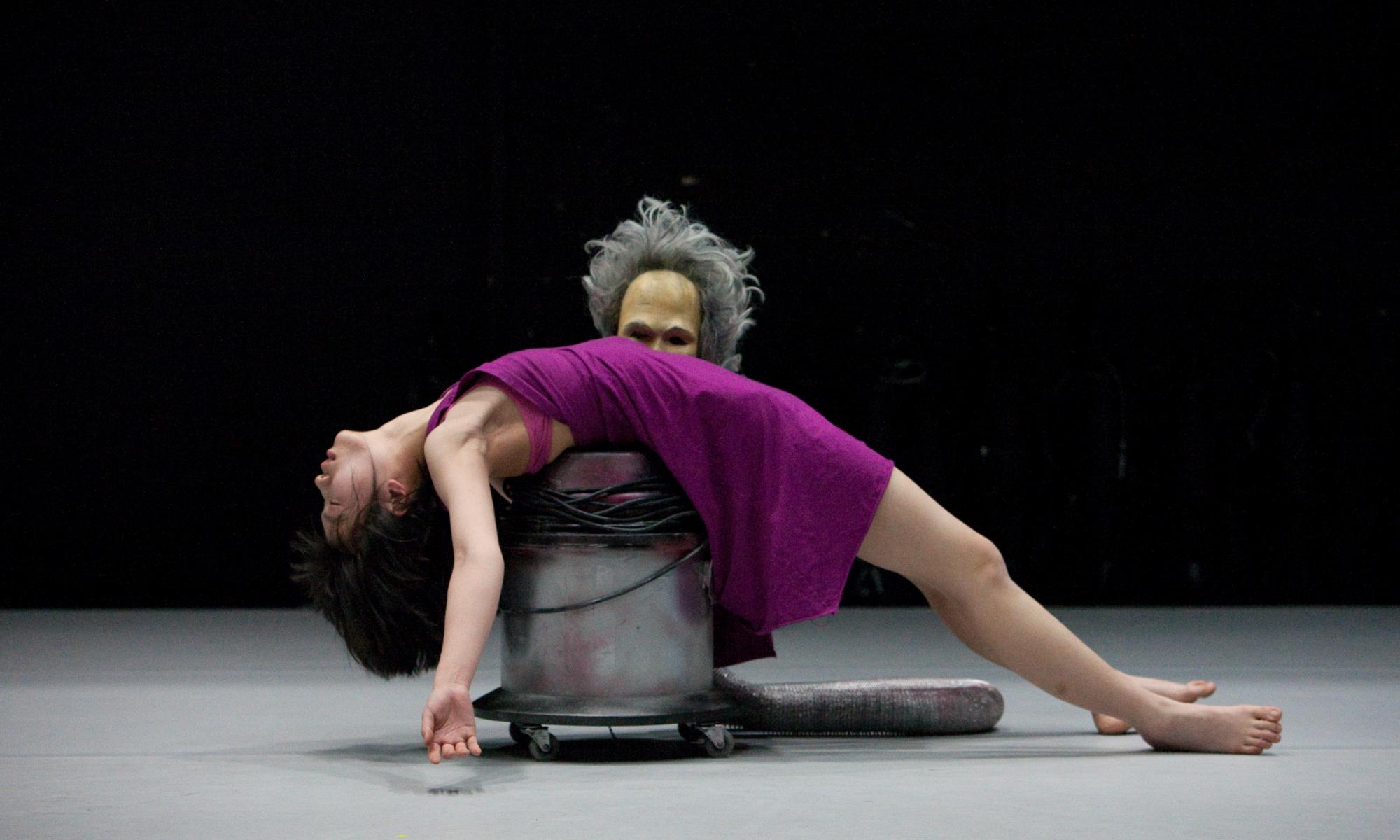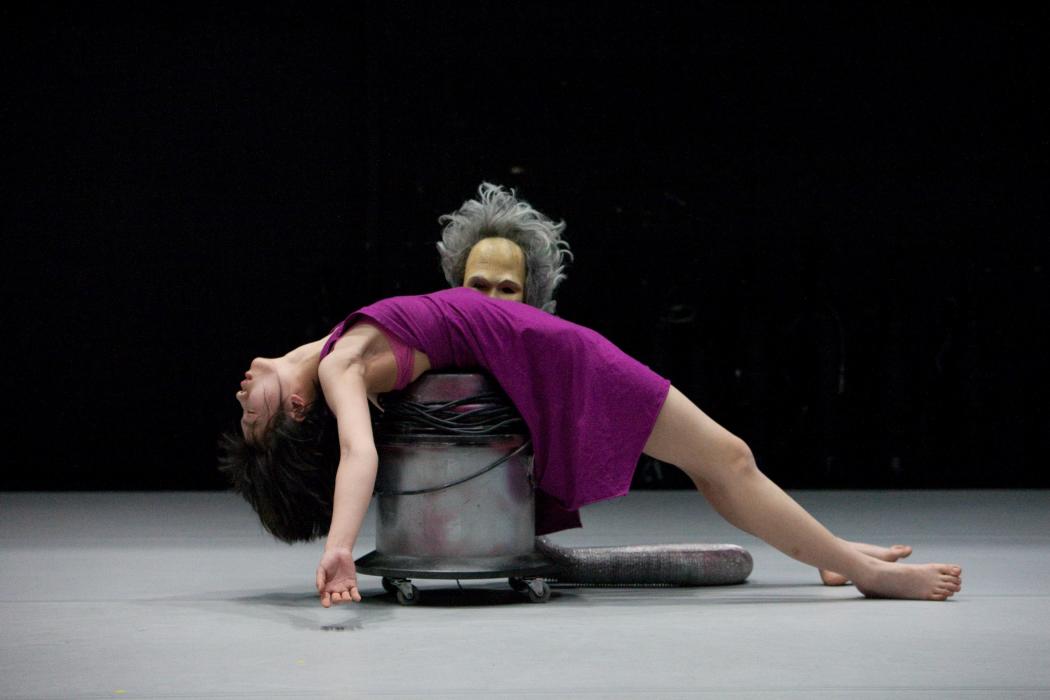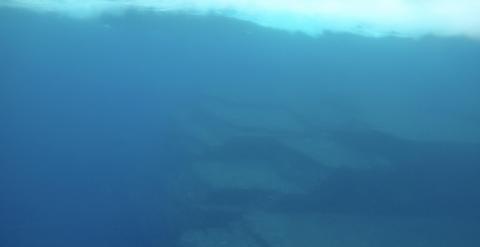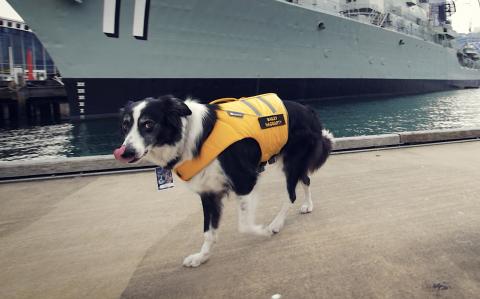Object agency in Geumhyung Jeong’s 7 Ways
‘To be a speculative realist, one must abandon the belief that human access sits at the centre of being, organising and regulating it like an ontological watchmaker.’(1)
Object Orientated Ontology (OOO) is an off-shoot of Speculative Realism and posits the theory that objects possess an existence that extends beyond human interaction with them and their immediate use value to humans. Objects (which include human beings in this theory) maintain an ongoing existence of their own and enter into interactions and relations with other objects: they live their own lives.
Entering one of the bays at Carriageworks, white vinyl flooring demarcates the stage where Geumhyung Jeong is already sitting, waiting to begin her performance. There is a series of objects placed to one side of the stage but scant other props or set. Jeong begins by removing her clothing and dressing in an all-black, head-to-toe puppeteer’s costume. Lying down, she places a white mask on one of her feet and begins to animate the mask through the gestures of her body. The animated object takes on the shape of a hunched, Quasimodo-type character, her legs become its back and neck, her arms its legs. Contorted and gnarled the creature approaches an inert mannequin, draped in a light, kimono jacket. The jacket is bumped by the movements of the puppet and slides off to reveal the mannequin’s naked chest. As the performance progresses the mannequin splits into two pieces; her legs are joined to her torso by a pink protuberance and a corresponding hole which easily form metaphors for our intimate body parts. The puppet attempts to join the mannequin back together but as Jeong is doing this with her other foot and no hands, it turns into a clumsy, fumbled attempt—a messy, trusting encounter.
The Internet of Things refers to the networked nature of many common devices. Not limited to mobile phones and computers it includes home appliances such as vacuum cleaners and toothbrushes that are embedded with electronics, software or sensors possessing network connectivity and enabling these devices to exchange data. It bestows these objects with greater agency, and an existence that is more than our immediate and personal interactions with them.
The strange and sexually-charged encounters between the artist and the seven objects are humorous, getting a number of laughs from the audience. Jeong, now wearing a bright magenta dress, brings out a large vacuum cleaner with a mask and messy, grey wig attached to the suction cord. This now sleazy-looking vacuum cleaner glides across the stage as the artist lies back on top of it, making their way over to the power point. When the vacuum cleaner is switched on an intense, suction-fuelled duel with the artist ensues, the vacuum cleaner attaching first to her face and neck, making its way down her body as the sexual energy of the scene elevates.
The next object is a Roomba-type, robotic vacuum cleaner. The Roomba tangles itself in power cords almost immediately. Unable to turn left, the Roomba spins uselessly until Jeong grabs it and places it into a garbage bin. The Roomba too is anthropomorphised, it wears a long black wig.
In 7 Ways, Jeong performs a series of objects through puppetry, artifice and anthropomorphism. In so doing, agency is bestowed upon the objects and this agency illustrates theatrically aspects of OOO theory where objects live their own lives beyond our direct interactions with them.
She creates a posthuman imagining where people enter into relationships, sexual and romantic, with objects that go beyond what we may generally deem acceptable. The puppets Jeong creates and the shapes her body forms combine with the vacuum cleaners, the masks, electronic toothbrush and garbage bins to create a push-pull between the viewer and the objects creating the art work, the ‘agency’ of the objects themselves and a deep exploration of intimacy and how we relate to our world.
A smaller audience to begin with, it is noticeable that a number of people leave before the conclusion of the performance. The show was, in a number of ways, hard going. With no lighting changes, music or sound throughout the performance the audience was asked to unerringly focus on the performer for a full hour and a half. The work is a tribute to Jeong in that she is able to powerfully hold that space, on her own, for that amount of time. The early leavers were predominantly older men raising the question: did the artist’s exploration of female sexuality, desire and release that didn’t directly relate to them, or another hu/man being that they could project themselves onto, prove too boring or unfathomable for them?
There are a number of other important elements to consider in Jeong’s work, such as her choice to have the objects approach her sexually. To me in a sleazy kind of way but perhaps my reading on this is too narrow. As the objects initiate the sexual encounters with the performer Jeong is more vulnerable, even disempowered by these advances. Alternatively, is Jeong being seduced by these objects and surrendering to her attraction?
The objects hold the power position in all but the final interaction with Jeong as she explores the breadth of sexualities that can exist and may be common in the future as our lives become more networked, intertwining with objects and technology. As she simulates masturbation with these objects she also challenges stigmas around the acceptability of female sexual pleasure. She explores a possible future where we enter into sexual relationships with objects rather than people and asks us to consider the parameters we place around what things are acceptable to desire, challenging us to expand this.
Through Jeong’s sexual encounters with these objects she unravels aspects of female sexuality, explores the mostly unrealised and unconsidered agency of objects and asks us to reconsider sexual desire. Jeong is based in South Korea and 7 Ways has come to Liveworks at Carriageworks in Sydney after a successful run at the Tate Tanks and PICA in Portland, Oregon earlier this year.
(1) Bogost, A., 2012, Alien Phenomenology, or What It’s Like to Be a Thing, University of Minnesota Press, p: 5 accessed online, http://blogs.consiliencelab.org.au/ylab1/files/2016/02/Bogost-1igbdt9.pd.



_0-itok=xmccPKhn.jpg)

